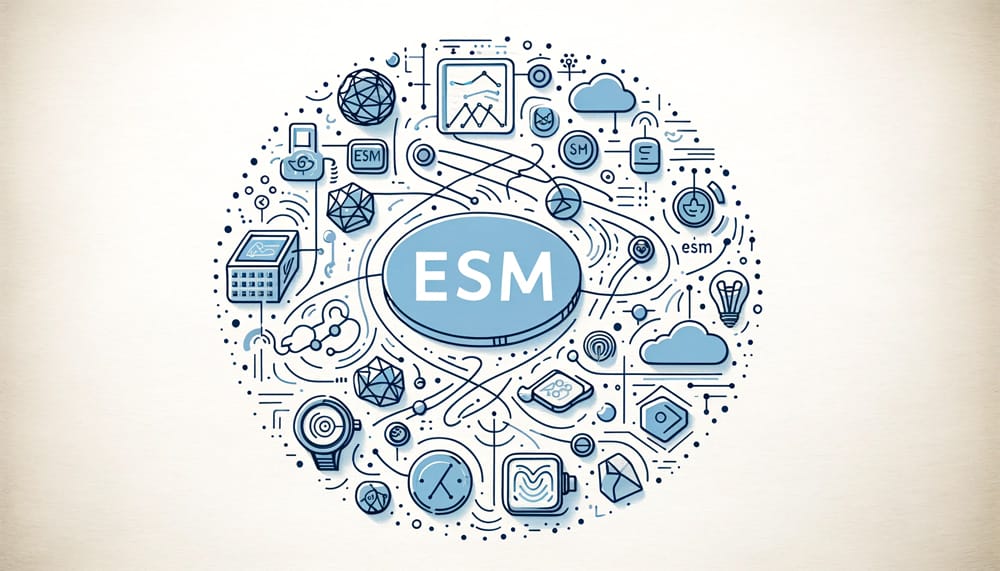1. Introduction
The Experience Sampling Method (ESM) stands as a beacon in the realm of research, shedding light on the intricate tapestry of human experience and behavior in real-time. Imagine asking your neighbor how optimistic they feel about their day ahead; their response could vary drastically from the groggy reluctance at dawn to a more upbeat tone after an invigorating evening run. This vivid illustration underscores the essence of ESM – capturing the dynamic ebb and flow of human emotions and actions as they unfold throughout the day.
“ESM captures the ever-changing human landscape, offering a window into our inner worlds with the precision of a painter and the insight of a poet. It’s not just research; it’s a journey into the heart of everyday life.”
1.1. Definition and Brief History of experience sampling methodology
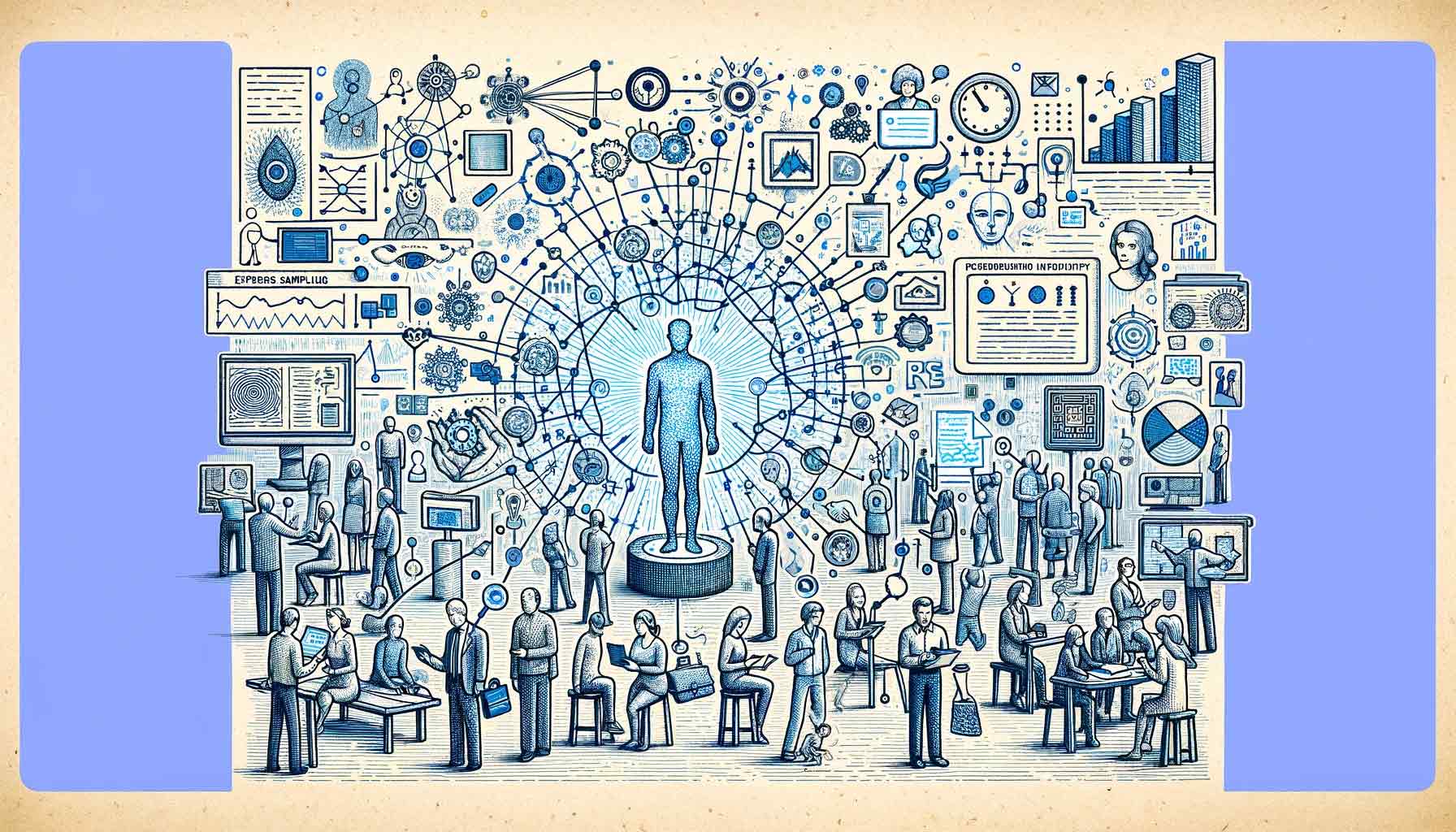
At its core, ESM is a nuanced research technique, ingeniously designed to capture spontaneous and in-the-moment responses from individuals. By doing so, it constructs a rich and authentic mosaic of daily human experiences.
ESM, in its scientific elegance, is defined as a method where individuals report their immediate thoughts, feelings, and behaviors at random intervals. This approach marks a departure from traditional methods, offering a lens that zooms in on the intricacies of daily life with remarkable clarity.
“Through the lens of ESM, we dive into the depths of the human condition, capturing the fleeting whispers of thought and emotion with a precision that bridges the gap between the art of understanding and the science of observation.”
The historical tapestry of ESM, woven by psychologists Reed Larson and Mihaly Csikszentmihalyi, has evolved from its humble pen-and-paper beginnings to embrace the digital revolution. This evolution has not only expanded its capabilities but also its reach across various fields of study.

1.2. Importance in Research and Assessment
ESM serves as a vital tool in dissecting the complexities of human behavior. It enables researchers to step into the shoes of their subjects, experiencing the world through their lens, thus offering a profound understanding of human interactions with their surroundings.
The method distinguishes itself by:
- Its ability to slash through the biases of retrospective reporting
- Providing rich, contextual data essential for a holistic understanding
- Capturing the transient nature of human experiences over time
“ESM stands as a beacon of insight in the vast sea of research, offering a lens that magnifies the minutiae of daily life with unparalleled precision. It’s not just a method but a bridge connecting the intricate dance of human behavior with the empirical rigor of scientific inquiry.”
ESM’s adaptability is its superpower, making it an invaluable asset in fields as diverse as psychology, healthcare, and market research. For instance, in healthcare, ESM has illuminated the daily struggles of patients, offering insights that are reshaping patient care practices.

1.3. Overview of Article Structure
In this comprehensive guide, we will navigate through the multifaceted world of ESM. From its foundational concepts to the nitty-gritty of implementation, we will explore how technological advancements are shaping its future. We will delve into the art of data analysis in ESM and celebrate its far-reaching applications across various disciplines. The journey will also acknowledge the challenges that come with the territory and peek into the crystal ball to foresee future trends.
Our expedition through this article aims to arm you, the researcher, with a deep and nuanced understanding of the Experience Sampling Method. We aspire to inspire, enabling you to harness the full potential of ESM in your research endeavors.
2. Understanding the Fundamentals of Experience Sampling Method (ESM)
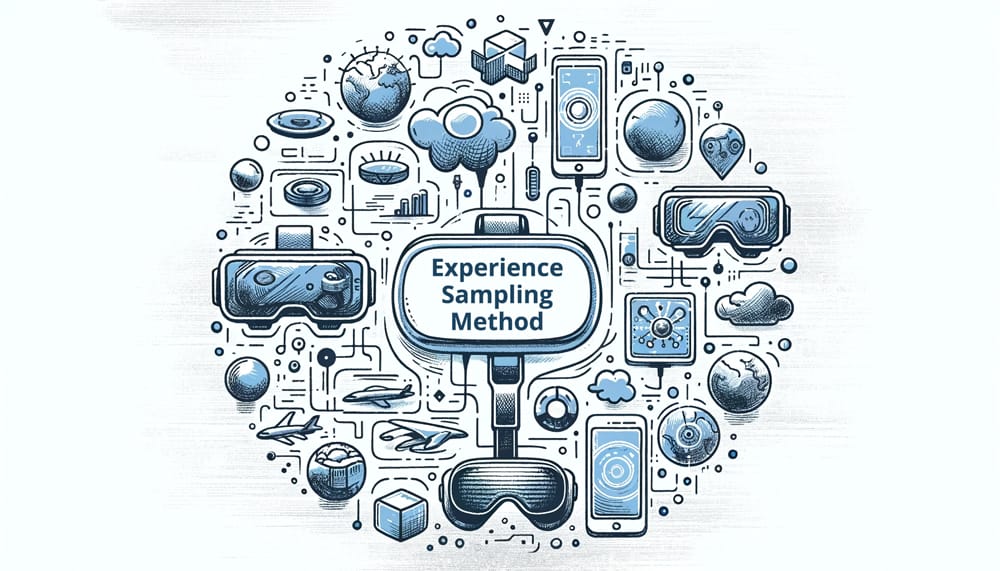
2.1. Key Concepts and Terminology
Experience sampling studies capture individuals’ behaviors, thoughts, and feelings in real time. Imagine being asked several times a day, at random moments, to jot down your current thoughts or feelings. This is the essence of ESM. It’s a way to get a snapshot of an individual’s daily life and experiences as they occur, providing a real-world context to psychological and social research.
ESM contrasts with traditional methods that often rely on retrospective reports, where participants recall past events or feelings, which can be prone to memory biases. The immediacy of ESM reduces these biases, offering more accurate and reliable data. For instance, if someone is asked to record their mood every hour, the data obtained will likely be more reflective of their actual emotional state throughout the day, compared to if they were asked to summarize their mood at the end of the day.
“ESM is akin to a scientific diary, meticulously charting the ebb and flow of human experience with the immediacy of a snapshot. It eschews the fog of memory for the clarity of the moment, turning the mundane into a canvas of rich data.”
2.2. Important Terminologies and Definitions

Event-contingent recording: One of the key terms in ESM, this involves participants responding to specific events or situations as they occur. For example, a beep on a smartphone prompts the user to record their feelings every time they engage in social interaction. Enhance your understanding of creating impactful prompts in Experience Sampling Method (ESM) studies with our guide, Crafting Effective Experience Sampling Method (ESM) Prompts: Tips and Examples. This resource offers practical tips and illustrative examples to assist researchers in designing prompts that effectively elicit valuable responses in ESM research.
- Signal-contingent recording: Here, participants respond at random signals, like a beep from a watch, ensuring a random sampling of moments throughout the day. This approach is crucial for capturing unanticipated experiences and reduces the likelihood of selective reporting.
- Interval-contingent recording: In this method, participants report at predetermined intervals, such as every hour or at specific times of the day. This variant is useful for studying phenomena that unfold over a set time frame, like mood fluctuations during work hours.
“ESM’s trio of recording strategies—event, signal, and interval-contingent—acts as a trident, piercing the depths of daily life to capture the rich, nuanced fabric of human experiences as they naturally unfold.”
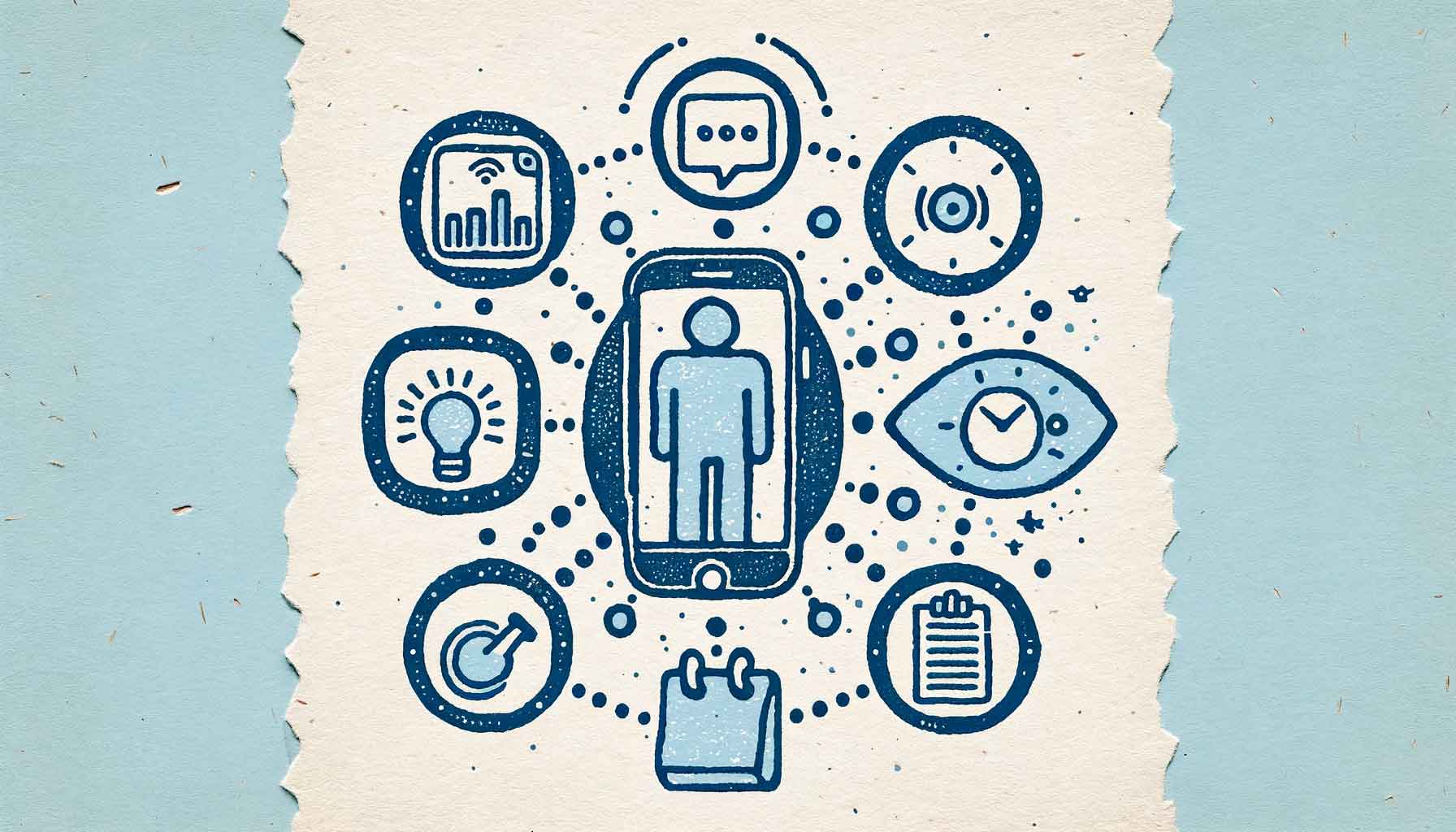
2.3. Differences Between Experience Sampling Methodology and Similar Approaches
While ESM is unique in its approach to data collection, it shares similarities with diary studies and ecological momentary assessment (EMA). Diary studies typically involve participants writing entries at the end of the day, which can lead to recollection biases. EMA, like ESM, focuses on capturing real-time data but is often more clinically oriented, used in health and psychological research.
“ESM captures life’s fleeting moments with precision, distinguishing itself from diary studies and EMA by focusing on the spontaneous, offering a vivid snapshot of authentic human experiences.”
A key difference is the specificity and timing of the data collection in ESM, which is more immediate and context-specific compared to the broader, often end-of-day reflections in diary studies. ESM’s real-time data capture provides a nuanced understanding of experiences as they unfold, a critical aspect in fields like psychology, sociology, and human-computer interaction. For a detailed exploration of the differences and applications between ESM and EMA, visit Experience Sampling Method (ESM) vs. Ecological Momentary Assessment (EMA): Understanding the Differences and Applications.
3. Variations of Experience Sampling Methodology
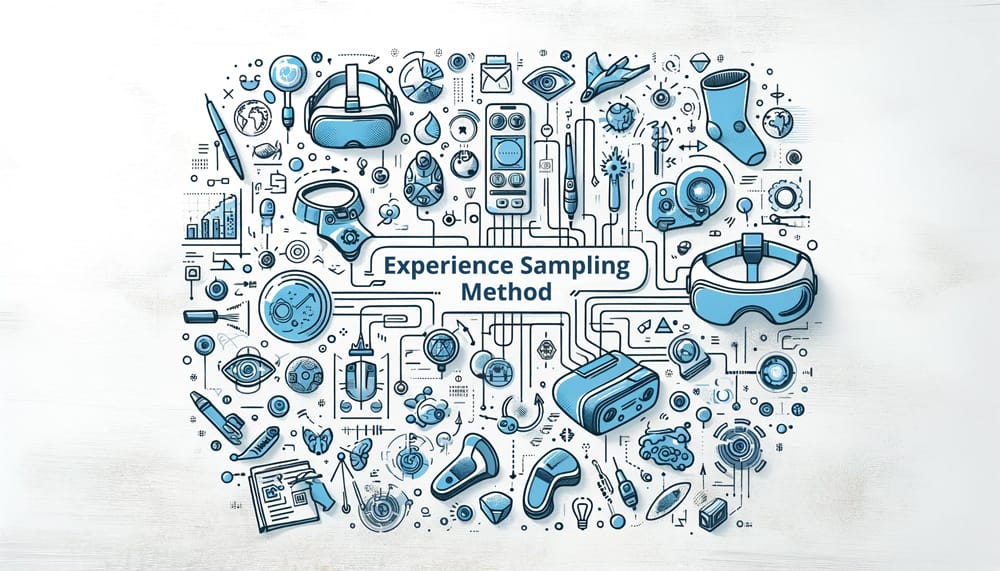
3.1. Introduction to Variants
ESM has evolved into several variants, each with its unique methodology and application. These include the aforementioned event, signal, and interval-contingent recordings, each tailored to specific research needs and contexts.
- Event-contingent recording is particularly useful in studies where the event’s occurrence is unpredictable, like mood changes in response to social interactions. It allows researchers to gather data specifically tied to the occurrence of these events.
- Signal-contingent recording offers a random sample of experiences throughout the day. It’s beneficial in studies aiming to capture a broad, unbiased view of a participant’s day, such as in lifestyle or wellbeing research.
- Interval-contingent recording is ideal for research that requires data at regular intervals. This method is often used in occupational studies where researchers might want to track work-related stress at different times during the workday.
“Each ESM variant targets specific research needs: event-contingent for unpredictable events, signal-contingent for random daily snapshots, and interval-contingent for fixed-time data, offering tailored insights into human experiences.”
3.2. Comparative Analysis of Variants
Each variant of ESM serves different research purposes. Event-contingent recording is excellent for capturing specific, event-driven data. Signal-contingent recording provides a random, holistic view of a participant’s day. Interval-contingent recording is useful for studying phenomena at fixed intervals, offering a structured approach to data collection.
For instance, in a study examining stress levels among healthcare workers, an interval-contingent approach might be used to assess stress at regular intervals during shifts. In contrast, an event-contingent approach could be more suitable for a study looking at mood changes in response to specific patient interactions.

3.3. Comparison of ESM Variants
A comparative table of ESM variants highlights key differences in methodology and application. This table serves as a quick reference for researchers to choose the most appropriate variant for their study. The table contrasts event-contingent, signal-contingent, and interval-contingent recordings, focusing on aspects such as timing of data collection, type of data captured, and typical applications in research. This comparison aids in understanding the unique strengths and limitations of each variant. Interpreting this table helps researchers understand which ESM variant best suits their study objectives. For example, if a study focuses on understanding daily routines, the signal-contingent approach might be the most appropriate. On the other hand, for research on reactions to specific events, the event-contingent approach would be more suitable.
“This comparative table of ESM variants is a compass for researchers, guiding them through the maze of methodologies to find the one that best illuminates the contours of human experience relevant to their study.”
Linking these fundamentals to practical application is crucial in ESM research. Understanding the nuances of each variant allows researchers to tailor their methods to the specific needs of their study, enhancing the quality and relevance of their findings. To delve deeper into the nuances of pilot testing in ESM, resources like Improving Compliance in ESM Data Collection provide further guidance and best practices.
3.4. Connecting Fundamentals to Practical Application

The transition from understanding ESM’s theoretical underpinnings to its practical implementation involves several considerations. First, researchers must decide which variant of ESM best aligns with their research questions. This decision is guided by the nature of the phenomena under study and the type of data needed.
For instance, a study exploring the impact of work environment on employee well-being might employ an interval-contingent approach to track changes throughout the workday. Conversely, research into the effects of unexpected social interactions on mood may benefit more from an event-contingent approach.
“Choosing the right ESM variant is like selecting the perfect lens to capture the nuances of human experience, where practicality meets purpose, illuminating the path from theory to tangible insights.”
Next, researchers must consider the practical aspects of ESM implementation, such as the frequency of data collection, the method of prompting participants (e.g., via smartphone apps or wearable devices), and the type of responses to be collected (e.g., quantitative scales, qualitative descriptions). For more insights into the impact of prompt frequency in ESM and strategies to optimize it, Improving Compliance in ESM Data Collection offers valuable information and practical approaches.
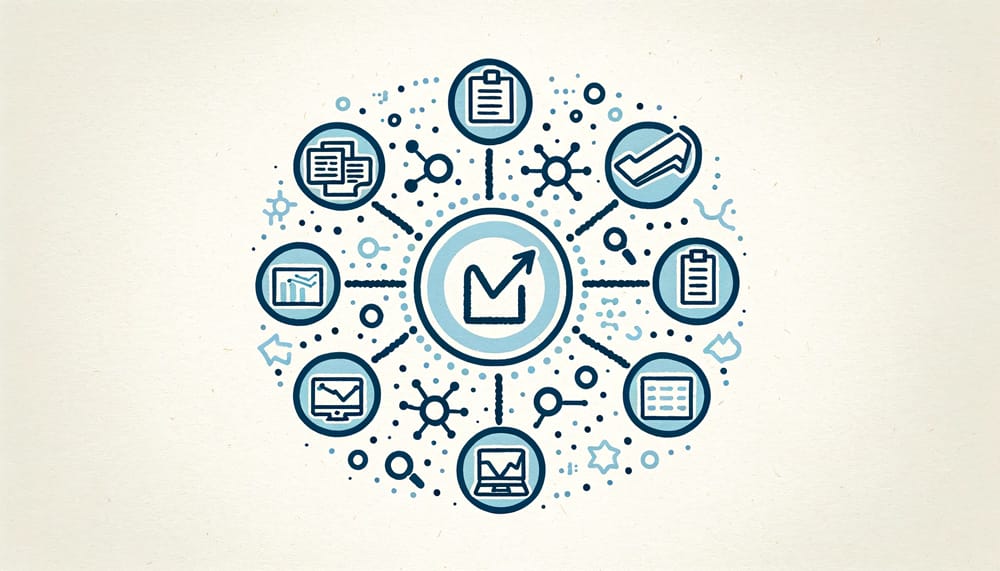
An important aspect of practical application is also ensuring participant compliance and managing the data collected. With ESM often requiring multiple responses throughout the day, researchers need to balance the need for comprehensive data with the potential burden on participants. Techniques to enhance compliance might include user-friendly data collection methods, clear instructions, and ensuring the privacy and confidentiality of participant responses.
Finally, the interpretation of ESM data requires careful consideration. The context in which data is collected can profoundly influence the findings. Researchers must be adept at analyzing and interpreting this data, taking into account the complexities of real-life experiences captured through ESM. For more detailed strategies on handling these challenges, researchers can refer to resources such as Challenges and Solutions in ESM Research.
“Balancing the richness of data with participant ease, ESM walks the tightrope of research rigor and real-world relevance, turning everyday moments into a canvas of invaluable insights.”
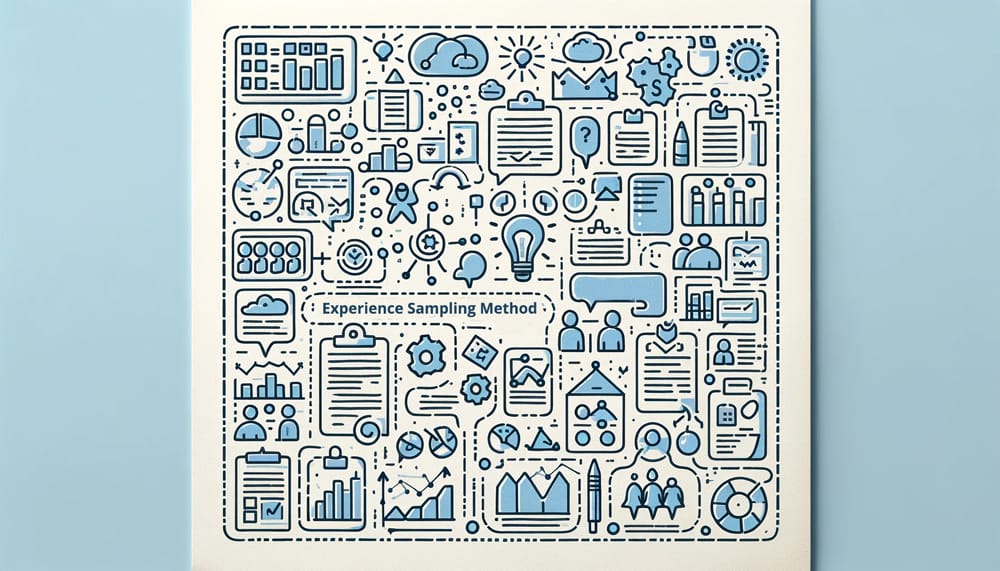
By effectively connecting these fundamentals to practical application, ESM becomes a powerful tool in understanding human experiences in their natural contexts. Its applications range from psychological research to user experience studies, offering insights that are both rich and relevant to real-world scenarios.
In summary, the Experience Sampling Method is a versatile and dynamic research tool, offering unique insights into human behavior and experiences. Its application, while requiring careful planning and consideration, opens up a world of possibilities for researchers across various disciplines. As we delve deeper into the nuances of ESM, we discover its potential to revolutionize our understanding of the human experience.
4. How to Implement Experience Sampling Methodology in Research

Implementing the Experience Sampling Method (ESM) in research involves meticulous planning and an understanding of its various components. This section delves into the key steps for successfully integrating ESM into research projects.
4.1. Planning an ESM Study
Before embarking on an ESM study, researchers must clarify their objectives. What specific aspects of human experience are they aiming to capture? Understanding the ‘why’ behind the study helps in designing a framework that effectively targets the research questions. For instance, a study focusing on workplace stress might aim to capture momentary stress levels and the contributing factors of employees throughout the workday. For more detailed guidance on effective ESM prompt design, including balancing clarity with engagement, resources such as Designing an ESM Study: Key Considerations and Steps can be extremely helpful.
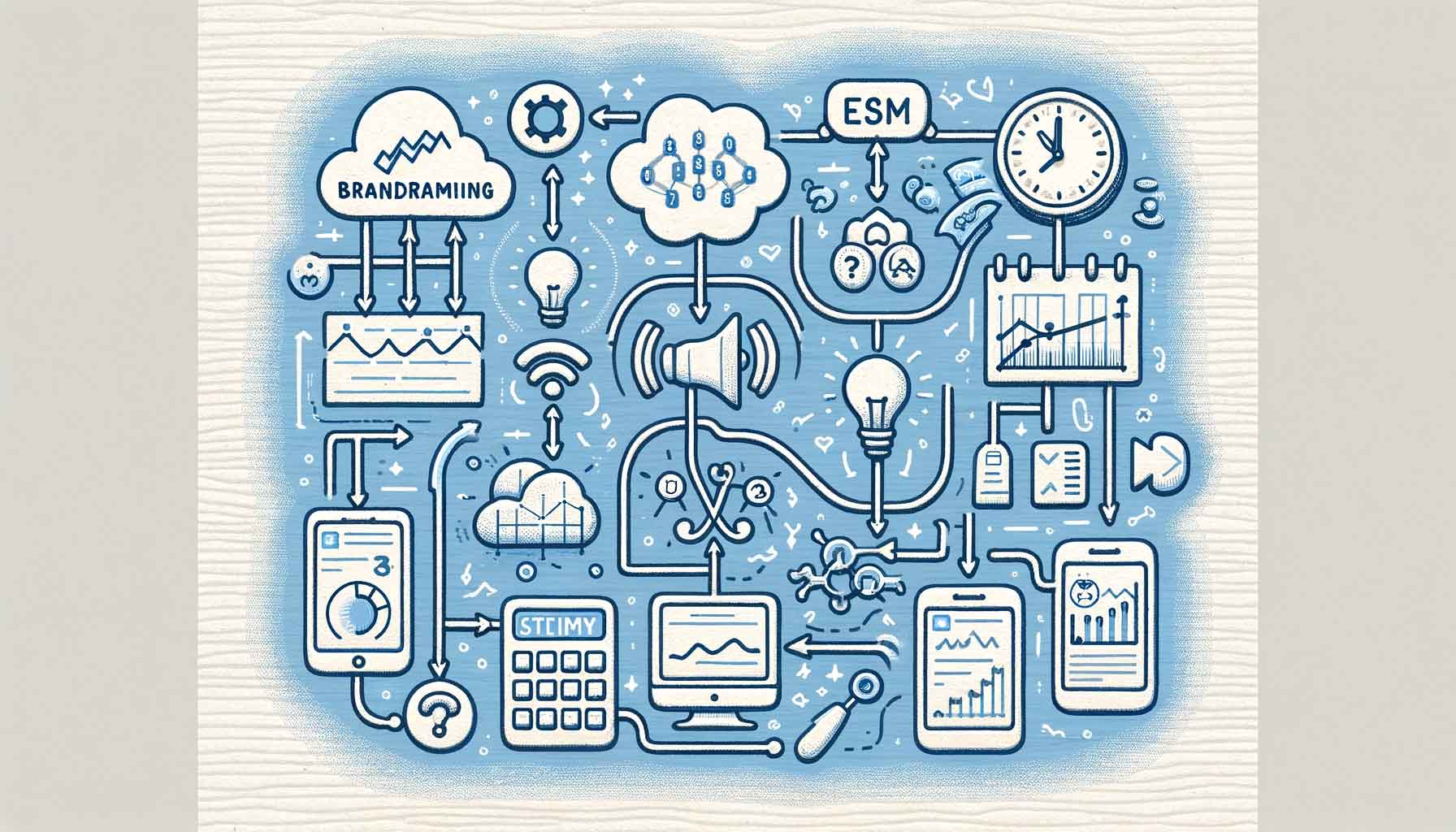
The next step is to design the study framework. This involves decisions about the frequency of data collection, the duration of the study, and the type of ESM approach (e.g., signal-contingent, event-contingent). The framework should align with the study’s objectives, ensuring that the data collected is relevant and sufficient to answer the research questions. For further insights and practical tips on ESM data analysis, exploring resources like Analyzing ESM Data: A Guide can be immensely beneficial.
“Crafting an ESM study is akin to mapping a voyage into the human psyche, where clarity of purpose and ethical compass guide us through the intricate waters of experience, ensuring every captured moment serves the quest for understanding.”
Ethical compliance is paramount when using experience sampling. This includes obtaining informed consent, ensuring participant privacy, and addressing any potential psychological impacts of the study on participants. Researchers must have their study protocol reviewed and approved by an institutional review board or ethics committee. Ensuring the privacy and confidentiality of participant data, as highlighted in Ethical Considerations in ESM Research.
4.2. Designing Effective ESM Questionnaires
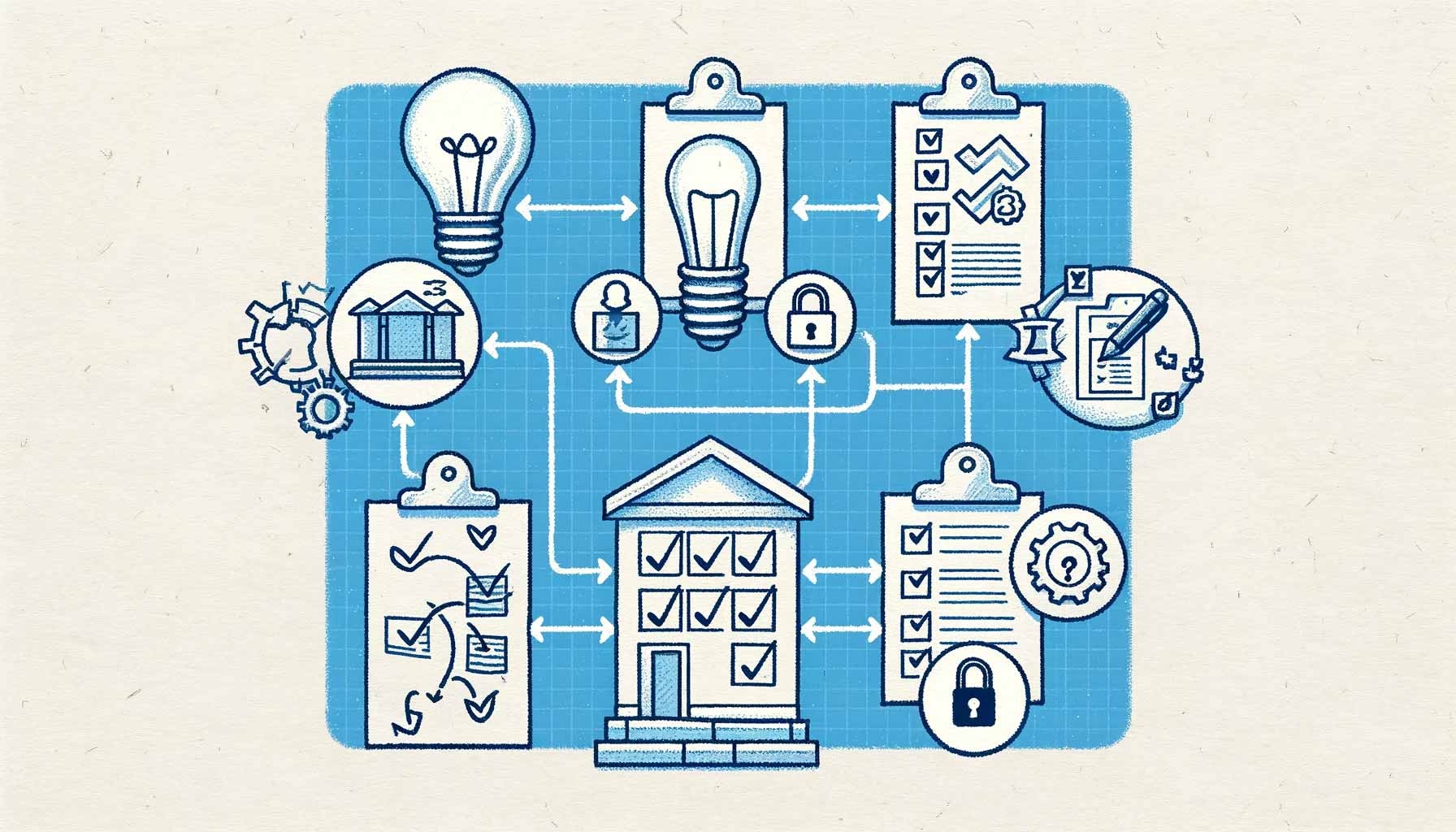
Effective ESM questionnaires are concise, clear, and relevant to the study’s objectives. Questions should be designed to minimize response burden while maximizing the quality of data collected about daily experience. This involves using straightforward language, avoiding ambiguous questions, and ensuring that the response format (e.g., Likert scale, open-ended) aligns with the type of data required. Also number of questions should not be too high.
“Crafting ESM questions is an art form—balancing brevity with depth, ensuring each word is a stepping stone towards unravelling the rich tapestry of daily human experience.”
For instance, in a study on daily mood variations, a question like “On a scale of 1-5, how happy do you feel right now?” is direct and easy to respond to. If the study is exploring more complex concepts like coping mechanisms, open-ended questions may be more appropriate, such as “What strategies are you using to manage your stress today?”
5. Selecting Appropriate Sampling Strategies
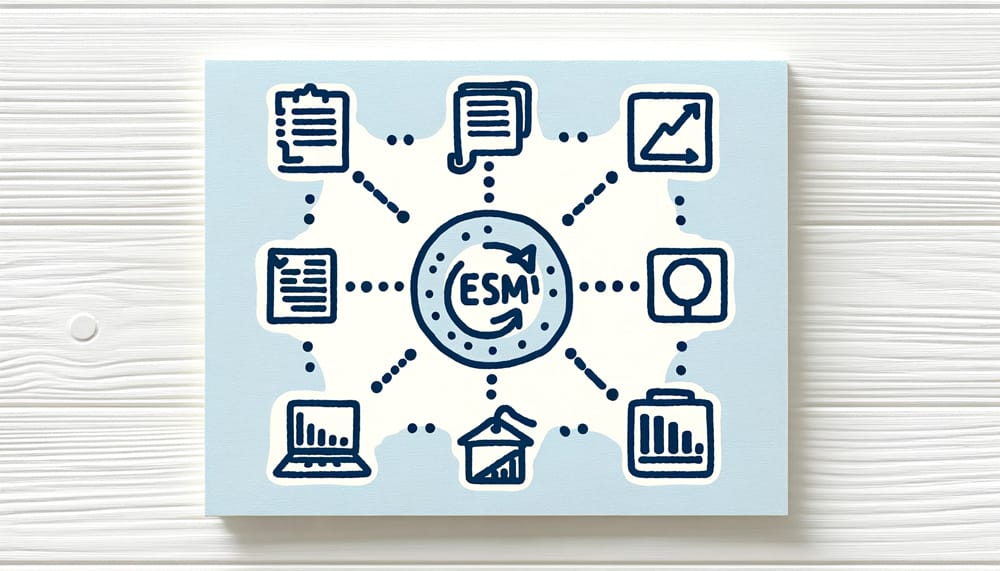
The choice of sampling strategy in ESM is crucial and depends on the study’s objectives. The strategy determines when and how often participants are prompted to provide data. In interval-contingent sampling, participants are prompted to respond at pre-determined intervals, such as every hour or at specific times of the day. This method is suitable for capturing data at regular intervals, providing a structured overview of the phenomena being studied.
Signal-contingent sampling involves random prompts throughout the study period. This method reduces potential bias that might occur if participants anticipate the prompts, ensuring a more naturalistic capture of experiences. Event-contingent sampling requires participants to respond when certain predefined events occur. This method is ideal for studying responses to specific, targeted events or experiences.
“Selecting an ESM sampling strategy is like choosing the right lens for a camera, each offering a unique perspective that brings the study’s objectives into sharp focus, while navigating the practical landscape of real-world experiences.”
Choosing the right strategy involves weighing the study’s objectives against the practicalities of each approach. For instance, interval-contingent sampling might be preferred in a structured environment like a workplace, while event-contingent sampling might be better suited for studying unpredictable events like social interactions.

The table outlines various ESM sampling strategies, detailing their methodologies and typical use cases. For example, interval-contingent sampling is described as a method with fixed time intervals, ideal for studies requiring consistent data points throughout the day. On the other hand, event-contingent sampling is characterized by its reliance on participant-triggered responses following specific events, making it suitable for studies focused on reactions to particular occurrences.
“The tapestry of ESM strategies weaves together a rich narrative of human experience, each thread—interval, signal, and event-contingent sampling—offering distinct insights tailored to the rhythm of daily life and the unpredictability of human behavior.”
5.1 Analysis of Applications and Effectiveness
Each sampling strategy has its unique strengths and is effective in different research contexts. Interval-contingent sampling, with its regular intervals, is excellent for capturing data on routine activities or mood fluctuations. Signal-contingent sampling, by introducing randomness in prompts, is effective for capturing a more representative snapshot of participants’ experiences. Event-contingent sampling excels in studies where the occurrence of specific events is crucial, such as in behavioral response studies. Incorporating strategies from resources like Participant Engagement in ESM Studies can provide additional insights into how to engage a wide range of participants, even within the constraints of convenience sampling.
6. Transition to Implementation

Transitioning from the theoretical aspects of ESM to practical implementation involves careful consideration of the study’s objectives, participant demographics, and logistical constraints. For instance, a study targeting a technologically-savvy demographic might lean towards using mobile app-based ESM, whereas a study with participants less comfortable with technology might opt for simpler methods like SMS prompts or paper diaries. Balancing scientific rigor with practical feasibility is key in this transition phase. For a deeper understanding of prompt timing strategies and technology applications in ESM, Technological Innovations in ESM Data Collection provides comprehensive insights.
“Navigating the shift from ESM’s conceptual framework to its field execution is akin to setting sail in uncharted waters, where the compass of clear objectives and the sails of adaptability guide researchers towards the shores of impactful insights.”
In conclusion, implementing ESM in research demands a thorough understanding of its methodologies, careful planning, ethical consideration, and a strategic approach to questionnaire design and sampling methods. The correct application of these principles ensures the collection of rich, meaningful data, paving the way for insightful analyses and impactful research findings.
7. Technological Advances in ESM and Ecological Momentary Assessment (EMA)
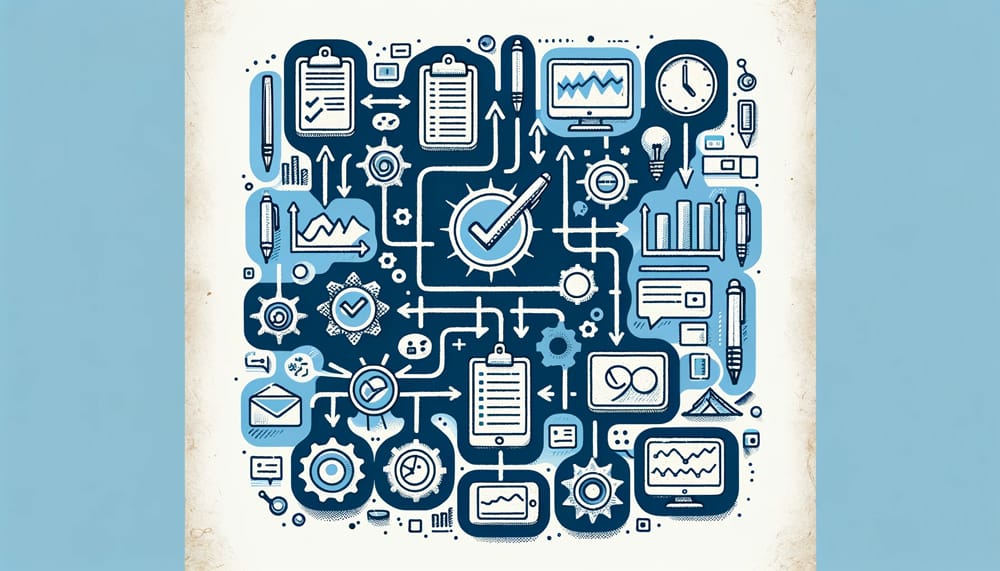
The evolution of technology in Ecological Momentary Assessment (ESM) has been significant, transitioning from paper-based methods to sophisticated digital solutions. Early ESM studies relied on pagers and diaries, but the advent of mobile technology revolutionized data collection. Today, smartphones and wearable devices offer unparalleled convenience and capabilities, enabling real-time, in-situ data collection with greater accuracy and efficiency. For a comprehensive understanding of the latest technological innovations in ESM, resources like Technological Innovations in ESM Data Collection offer in-depth information and insights.
“The march of technology has transformed ESM from a pen-and-paper exercise into a digital symphony of real-time insights, where smartphones and wearables play the lead, harmonizing the melody of human experience with the rhythm of scientific discovery.”

The use of mobile and wearable technology in ESM brings numerous advantages. These devices facilitate more frequent and timely data collection, reducing recall bias. Their widespread availability and user familiarity lower participation barriers, enhancing engagement and compliance. Moreover, the integration of sensors in these devices allows for passive data collection, such as physical activity levels or physiological responses, providing a more comprehensive understanding of the participants’ experiences and behaviors.
Despite their benefits, mobile and wearable devices in ESM also present challenges. Issues include potential intrusiveness, privacy concerns, and the need for constant battery life. There’s also the digital divide, where differences in access to technology can lead to sample bias. Furthermore, the variability in device types and operating systems can complicate data standardization and analysis.
8. Ensuring Data Security and Privacy

Data security is paramount in ESM research, especially with the use of mobile and wearable devices. Sensitive data collected in real-time can include personal health information, location data, and even biometrics. Ensuring the confidentiality and integrity of this data is critical to protect participant privacy and maintain trust. Researchers must adhere to rigorous data security protocols to prevent unauthorized access, breaches, and potential misuse of data. To delve deeper into the nuances of pilot testing in ESM, resources like Improving Compliance in ESM Data Collection provide further guidance and best practices.
“In the digital age of ESM, data security is the fortress that guards the sanctity of personal experiences, ensuring that every heartbeat and whisper of life captured is shielded with the highest standards of privacy and trust.”
To safeguard data, researchers employ various strategies. Encryption is standard practice, both during data transmission and storage. Robust authentication mechanisms are implemented to restrict access. Regular security audits and updates are necessary to address emerging threats. Additionally, data anonymization techniques can be used to further protect participant identities, especially in datasets that might be shared or published.

Legal and ethical considerations in ESM research are intertwined with data security and privacy. Compliance with regulations like GDPR (General Data Protection Regulation) or HIPAA (Health Insurance Portability and Accountability Act) is essential. Researchers must obtain informed consent, clearly explaining how data will be collected, used, and protected. Ethical review boards often oversee ESM studies to ensure adherence to these standards. Ensuring the privacy and confidentiality of participant data, as highlighted in Ethical Considerations in ESM Research.
“In the intricate dance of ESM research, legal and ethical principles are the guiding stars, ensuring that the quest for knowledge always respects the privacy and dignity of those who contribute their experiences.”
The landscape of ESM software tools is diverse, with each offering unique features and capabilities. The top tools in the field are characterized by robust data collection and management features, user-friendly interfaces, and strong security protocols. These tools often support a range of data types, from self-reported assessments to passive sensor data. Leading software options also excel in scalability, allowing for both small-scale studies and large, complex research projects.
9. Software and Apps for ESM Data Collection

The market for ESM data collection tools is rapidly expanding, with a variety of software and apps available. These tools are designed to facilitate the collection, storage, and analysis of ESM data, often integrating various features like real-time data capture, customizable questionnaires, and automated triggers for data collection. The choice of software can significantly impact the quality and efficiency of data collected in ESM studies.
“In the burgeoning marketplace of ESM tools, the alchemy of innovation transforms raw data into gold, offering researchers a treasure trove of insights with the ease of a tap, swipe, or click.”
Leading ESM software tools distinguish themselves through a combination of user-friendly design, robust data collection capabilities, and flexible customization options. Key features often include support for multiple data types (e.g., self-reports, sensor data), real-time data processing, and comprehensive data management and analysis tools. Advanced software may also offer AI-driven insights, helping researchers to derive more meaningful conclusions from their data.

When selecting ESM software, researchers must consider several criteria. Compatibility with various devices and operating systems is crucial, as is the ease of use for both researchers and participants. The software’s ability to handle the specific data types required for the study is essential. Researchers should also evaluate the software’s data security measures, customer support, and cost-effectiveness to ensure it meets their study’s needs and budget.
“Choosing the right ESM software is akin to selecting a compass for a journey of discovery: it must be precise, reliable, and suited to the terrain, ensuring that the path of inquiry leads to rich insights and secure, meaningful conclusions.”
In summary, technological advancements have significantly shaped the practice of ESM, enhancing its effectiveness and expanding its potential applications. While mobile and wearable technologies offer substantial benefits in data collection, they also bring forth challenges that need careful consideration. The choice of software and apps plays a crucial role in the success of ESM studies, with a focus on functionality, user experience, and data security being paramount.
10. Data Collection and Analysis in Experience Sampling Research

10.1. Best Practices for Data Collection
Effective data collection in ESM research begins with meticulous preparation. This includes defining the research objectives, selecting the appropriate software and devices, and designing the data collection process. Training sessions for participants are vital to ensure they understand how to use the tools and what is expected of them during the study. Pilot testing the data collection process can also identify potential issues before the full-scale study begins. For more in-depth guidance, exploring resources such as ESM Data Visualization Techniques can be incredibly beneficial.

Participant engagement is key to the success of an ESM study. Researchers need to maintain regular communication with participants, providing support and addressing any concerns they may have. Incentives can be used to motivate participants, but they must be carefully chosen to avoid biasing the data. Keeping the data collection process as unobtrusive as possible also helps in maintaining high levels of participant engagement. Explore essential strategies for dealing with missing data in ESM studies in our detailed guide, Handling Missing Data in Experience Sampling Method (ESM) Research: Best Practices, where we cover best practices and effective approaches.
“In the realm of ESM research, the art of data collection is a delicate balance between rigorous preparation and fostering a harmonious partnership with participants, ensuring each data point collected is a brushstroke in the masterpiece of human experience understanding.”
To ensure data quality and integrity, researchers must implement strict protocols for data collection and handling. This includes regular checks for data accuracy and completeness, as well as protocols for dealing with missing or anomalous data. Training participants properly and using reliable software and devices also contribute significantly to the quality of the collected data. Explore essential strategies for dealing with missing data in ESM studies in our detailed guide, Handling Missing Data in Experience Sampling Method (ESM) Research: Best Practices, where we cover best practices and effective approaches.
10.2. Handling and Analyzing ESM Data
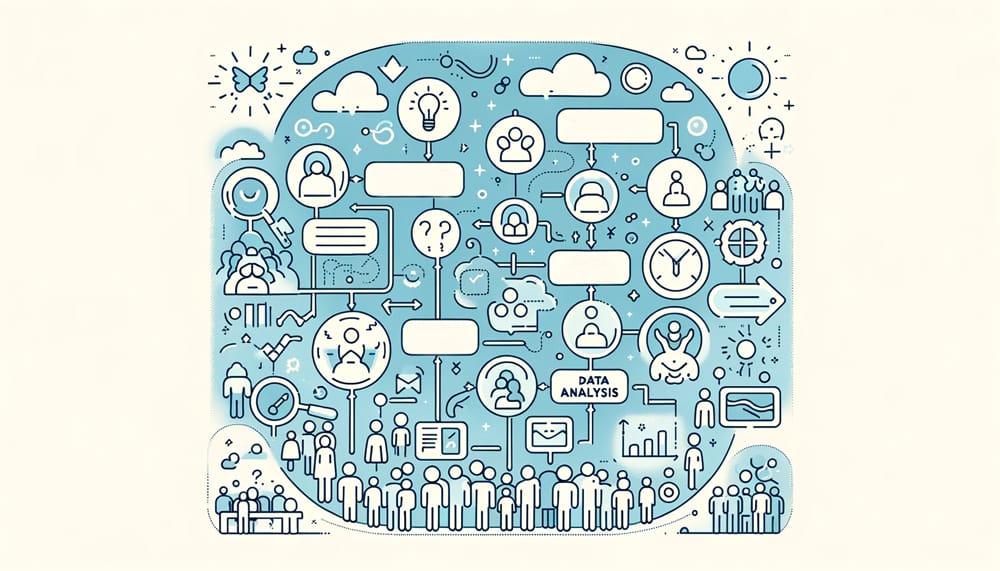
Effective data handling is critical for the success of an ESM study. This involves establishing secure and efficient methods for data storage, retrieval, and backup. Researchers must ensure the data is organized in a manner that facilitates easy access and analysis. Regular data audits can be beneficial to maintain data integrity and to identify any issues early in the process. For further insights and practical tips on ESM data analysis, exploring resources like Analyzing ESM Data: A Guide can be immensely beneficial.
ESM data analysis requires a blend of traditional and innovative statistical techniques. Given the often large and complex nature of ESM datasets, researchers might employ methods like time-series analysis, multilevel modeling, or machine learning algorithms. These techniques help in uncovering patterns and relationships within the data that might not be apparent through more straightforward analytical methods.

“Handling and analyzing ESM data is akin to navigating a vast ocean of information, where meticulous organization meets cutting-edge analytics to reveal the underlying currents of human experience, guiding researchers to shores of insightful discovery.”
Interpreting results from ESM data demands a nuanced understanding of the context and the nature of the data. Researchers must consider the temporal dynamics and the situational contexts of the data points. It is also crucial to differentiate between correlation and causation, especially given the observational nature of ESM data. Clear and cautious interpretation is key to drawing valid conclusions from the study.
10.3. Statistical Approaches and Models
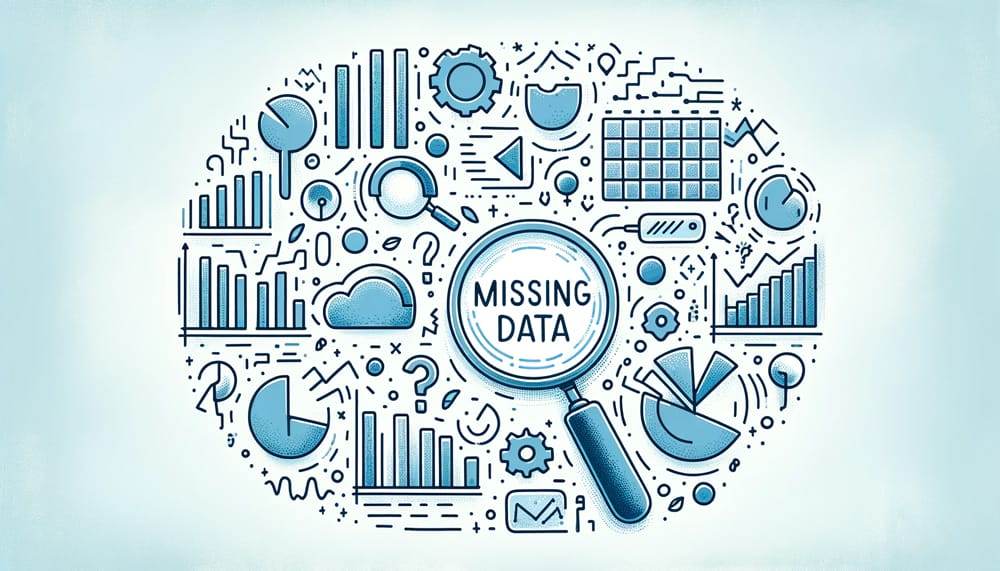
A variety of statistical methods are used in ESM research to analyze the rich and complex data. These methods range from descriptive statistics, which summarize the basic features of the data, to inferential statistics, which allow researchers to make predictions or inferences about a population based on a sample. The choice of statistical methods depends largely on the research question and the nature of the data.
“In the rich tapestry of ESM data, statistical methods serve as the loom, weaving together threads of information to reveal patterns and narratives hidden within the weave of daily experiences, guiding researchers through the labyrinth of human behavior and emotions.”
Specific statistical models such as linear regression, logistic regression, and generalized linear models are frequently employed in ESM studies. These models help in understanding the relationships between various factors captured in the ESM data. Advanced models, like structural equation modeling and mixed-effects models, are also used to account for the hierarchical and longitudinal nature of ESM data. Explore the intricacies of ESM in “Using Experience Sampling Method (ESM) in Longitudinal Studies: Challenges and Solutions”.
11. Ethical Considerations and Participant Welfare in ESM Research

11.1. Ensuring Participant Privacy and Confidentiality
In ESM research, where data collection is intensive and often personal, prioritizing participant privacy is crucial. Researchers must ensure that the data collected, especially when it includes location, personal interactions, and emotional states, is kept confidential and secure. This involves implementing robust data protection measures and being transparent with participants about how their data will be used and stored. Ensuring the privacy and confidentiality of participant data, as highlighted in Ethical Considerations in ESM Research.
Key strategies include using encrypted data storage, secure transmission methods, and anonymizing participant data. It’s essential to obtain informed consent that clearly explains these measures. Additionally, researchers should have protocols in place to handle any data breaches or privacy concerns that may arise during the study.

“In the intimate dance of ESM research, privacy and confidentiality are the sacred vows between researchers and participants, a trust underpinned by rigorous data protection measures and a commitment to ethical integrity.”
Compliance with legal frameworks like GDPR in the European Union, or HIPAA in the United States, is mandatory. These regulations provide guidelines on data handling, storage, and participant rights, ensuring that ESM research adheres to high ethical standards. Researchers must be familiar with these frameworks and integrate their requirements into the study design.
11.2 Managing Participant Burden and Fatigue

Participant burden refers to the effort and time required from individuals participating in the study. In ESM, frequent prompts and questionnaires can lead to participant fatigue, affecting both the quality of the data and the well-being of the participants. It’s important to balance the need for rich data with the practicalities of participants’ daily lives. Incorporating strategies from resources like Participant Engagement in ESM Studies can provide additional insights into how to engage a wide range of participants, even within the constraints of convenience sampling.
Techniques to minimize fatigue include optimizing the number and timing of prompts, ensuring that the questions are straightforward, and allowing flexible response times. Encouraging participant engagement through regular feedback, incentives, and a user-friendly interface can also help maintain interest and participation rates.

“In the symphony of ESM research, participant burden is a delicate note that requires careful tuning. Striking the right balance between data richness and the rhythm of daily life ensures the melody of engagement and quality resonates throughout the study.”
In longitudinal studies, where data collection spans an extended period, the risk of participant fatigue is higher. Ongoing communication, support, and flexibility are key. Researchers should monitor participant engagement and well-being throughout the study and be prepared to make adjustments if necessary. Navigate ESM’s complexities in longitudinal studies with this essential read.
11.3 Addressing Sensitive Topics and Emotional Well-being

ESM research often delves into personal and sensitive topics like mood, social interactions, and behaviors. Researchers must be prepared to handle this data delicately and respectfully. This includes having protocols for situations where the data reveals potentially harmful behaviors or mental health concerns.
Researchers have a responsibility to consider the emotional impact of ESM participation. This might involve providing resources or referrals to mental health services, especially if the study involves sensitive or potentially triggering content. Ensuring that participants are aware of these resources from the outset is crucial.
“In the realm of ESM research, navigating the personal landscapes of mood and behavior is a journey undertaken with empathy and respect. Ethical stewardship and emotional mindfulness form the compass that guides researchers through the sensitive territories of human experience.”
Obtaining ethical approval from an institutional review board or ethics committee is a fundamental step in any ESM study, especially those involving sensitive topics. Continuous monitoring throughout the study for any ethical concerns is also necessary. This proactive approach ensures that the study adheres to the highest ethical standards and respects the emotional and psychological well-being of the participants.
12. Applications of ESM in Various Fields
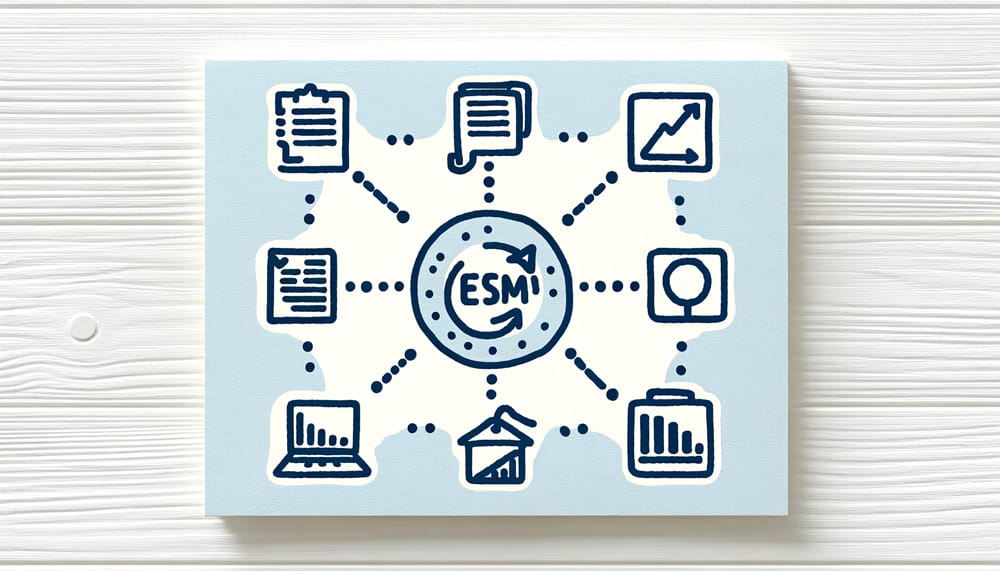
12.1. ESM in Psychological Research
ESM plays a pivotal role in psychological research by providing real-time, in-situ data that reflects participants’ behavior, thoughts, and feelings in their natural environments. This approach overcomes the limitations of traditional methods that rely on retrospective self-reports, enhancing the ecological validity of psychological studies.
“ESM in psychology is like a microscope for the human condition, magnifying the minute-to-minute shifts in mood and thought, and illuminating the complex dance between external stimuli and internal responses, offering groundbreaking insights into the fabric of mental health.”
ESM method has been instrumental in advancing our understanding of mood disorders, stress, and coping mechanisms. For instance, a landmark study in the field used ESM to track mood fluctuations in patients with bipolar disorder, revealing intricate patterns in mood variability and its triggers. Another significant study utilized ESM to examine the dynamics of stress and recovery, showing how daily stressors impact well-being and the effectiveness of various coping strategies in real time. These findings have profound implications for the development of personalized treatment and intervention strategies in psychology.
12.2. Future Directions in Psychological and Mental Health Research

The future of ESM in psychological research is poised towards integrating advanced technology like AI and machine learning to analyze complex datasets. This integration can lead to more nuanced understanding of mental health conditions, paving the way for predictive models and real-time adaptive interventions. Furthermore, exploring cross-cultural applications of ESM can provide valuable insights into the universal and culture-specific aspects of psychological phenomena. Discover the future prospects of Experience Sampling Method (ESM) research in our enlightening guide, Future Directions in Experience Sampling Method (ESM): Emerging Trends and Technologies. This article explores upcoming trends and technological advancements that are shaping the future of ESM research, providing valuable insights for researchers and practitioners in the field.
12.3 ESM in Clinical Trial and Healthcare Research
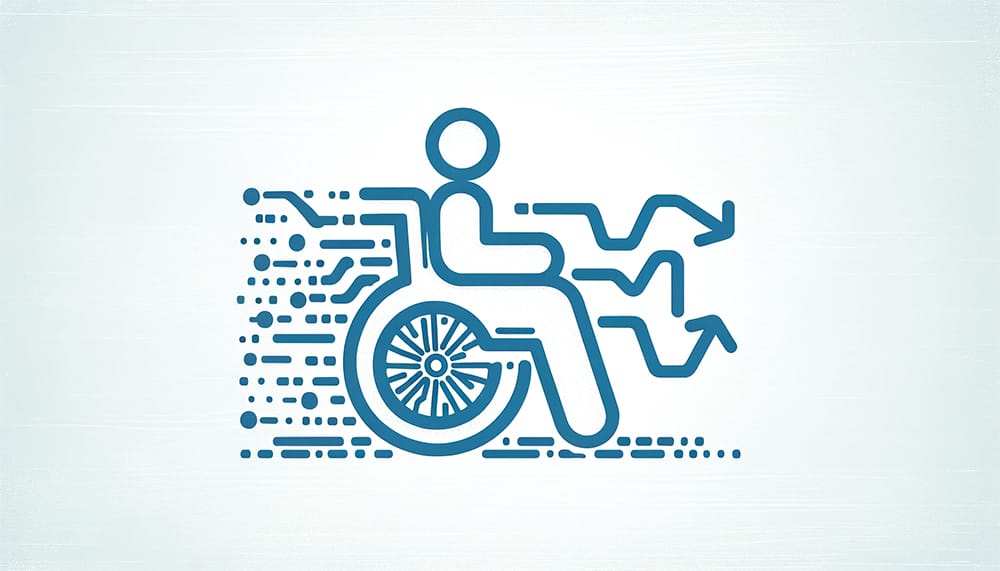
In clinical settings and health research, ESM is revolutionizing the approach to patient care. It enables continuous monitoring of patients’ symptoms and well-being, providing clinicians with actionable insights. This method is particularly beneficial in managing chronic conditions where symptom patterns and treatment responses can vary significantly over time.
The impact of ESM on patient care and treatment is profound. For instance, in the management of chronic pain, ESM has facilitated the development of tailored pain management plans based on individual pain patterns. In mental health care, ESM aids in monitoring patient symptoms in real-time, allowing for timely adjustments in treatment plans. This personalized approach not only improves treatment efficacy but also enhances patient engagement and satisfaction.
“ESM in healthcare is a beacon of innovation, casting light on the nuanced landscapes of illness and recovery. By capturing the ebb and flow of symptoms in the tapestry of daily life, it crafts a personalized medicine approach, transforming patient care into a collaborative journey of insight and healing.”
Despite its benefits, ESM faces challenges in clinical research, primarily concerning data management and patient compliance. Managing the vast amount of data generated can be daunting, requiring robust data handling and analysis systems. Ensuring patient compliance, especially in populations with cognitive impairments or low motivation, remains a significant hurdle, necessitating the development of user-friendly and engaging ESM methodologies.
12.4. Use of ESM in Social Sciences (Data Collection of Social Interactions)

In social sciences, ESM has emerged as a vital tool to study human behavior and social interactions in naturalistic settings. It bridges the gap between laboratory research and real-world dynamics, providing insights into how individuals navigate their social environments.
ESM has enabled groundbreaking studies in various domains of social science. For example, in sociology, ESM has been used to study the dynamics of social networks and interactions, revealing patterns in social behavior and connectivity. In anthropology, it has provided insights into cultural practices and daily routines across different communities. These studies contribute significantly to our understanding of social structures and processes.
“ESM in the social sciences acts as a lens, zooming in on the intricate dance of human interaction within the vast stage of society. It captures the spontaneous, the habitual, and the exceptional, weaving a richer understanding of the social fabric that binds us all.”
Emerging trends in the use of ESM in social sciences include its application in studying societal responses to global challenges like pandemics and climate change. Researchers are increasingly using ESM to capture real-time data on social behaviors and attitudes, providing valuable information for policymakers and stakeholders. Additionally, the integration of ESM with geospatial technologies is opening new avenues for studying human-environment interactions and spatial behavior. For more in-depth exploration of qualitative techniques in ESM, resources such as Integrating ESM with Qualitative Research can be highly informative.
13. Challenges and Limitations of ESM

ESM offers a unique window into the daily lives of participants, capturing real-time data in naturalistic settings. However, this methodology is not without its challenges, which can impact the validity and reliability of research outcomes. Learn the art of selecting the right participants for Experience Sampling Method (ESM) studies in our informative guide, How to Select Participants for an Experience Sampling Method (ESM) Study: Sampling Techniques. This guide delves into various sampling techniques, providing insights and strategies to help researchers ensure effective participant engagement in ESM research.
One of the primary methodological challenges in ESM is the accuracy and completeness of data. Since ESM relies heavily on participant responses, issues such as recall bias or selective reporting can affect data quality. Researchers must design ESM studies carefully to minimize these biases, such as by providing clear instructions and using intuitive data collection tools.
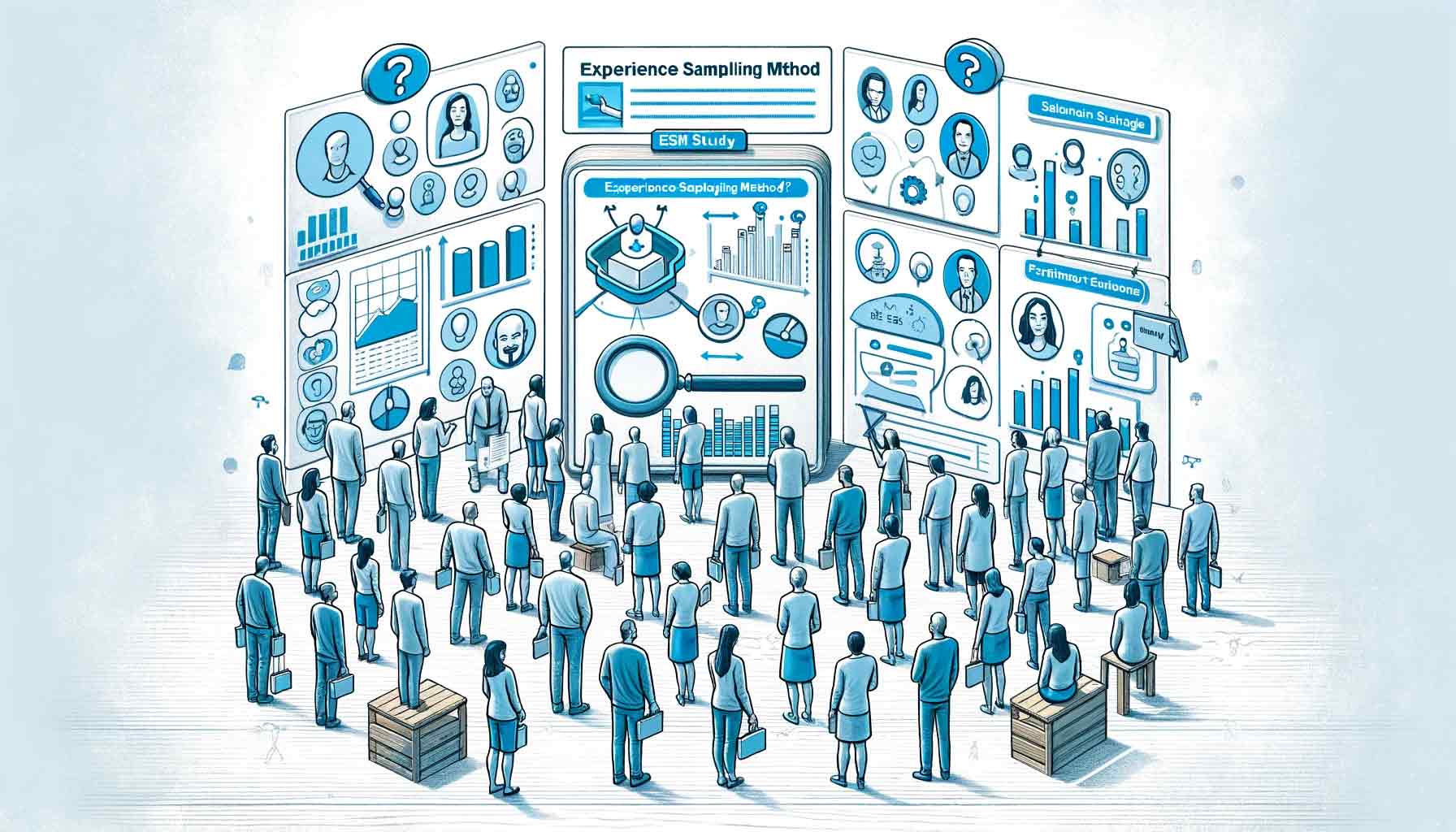
Achieving a balance between collecting detailed data and not overburdening participants is crucial. Excessive demands on participants’ time and attention can lead to reduced compliance and data quality. To address this, researchers can limit the number of assessments per day, ensure that each assessment is brief, and design user-friendly data collection interfaces.
“Mastering ESM is akin to conducting an orchestra of human experience, where the harmony of authentic data collection and participant engagement must be finely tuned to compose a symphony of reliable and insightful research outcomes.”
Another challenge is ensuring that ESM data is representative and reliable. This involves selecting a diverse and appropriate sample size and considering factors like participant dropout or irregular responses. Strategies to enhance representativeness and reliability include using random sampling methods and incorporating strategies to maintain participant engagement throughout the study.
13.1. Participant-Related Issues

Participant non-compliance and attrition are significant issues in ESM research. Factors such as perceived intrusiveness, time commitment, or technical difficulties with data collection tools can lead to participant dropout. To mitigate these issues, researchers can provide adequate training, offer incentives, and maintain regular communication with participants. To delve deeper into the nuances of ESM study design, resources like Designing an ESM Study: Key Considerations and Steps offer valuable insights and guidelines, aiding researchers in crafting studies that are both robust and insightful.
“In ESM, fostering participant engagement is not just a strategy but a cornerstone of success, transforming the research journey into a shared adventure where every ping of compliance weaves into the rich tapestry of groundbreaking insights.”
Enhancing participant engagement is key to successful ESM research. This can be achieved by involving participants in the research process, making data collection enjoyable or meaningful, and providing feedback on their participation. Gamification elements or user-friendly app interfaces can also increase engagement and compliance.
13.2. Ethical and Privacy Concerns

ESM research often involves collecting sensitive data, raising ethical concerns. Researchers must navigate these dilemmas by ensuring informed consent, respecting participant autonomy, and maintaining confidentiality. Ethical considerations also include the potential psychological impact of self-monitoring, which must be addressed in the study design.
Protecting participants’ privacy is paramount in ESM research, especially when collecting data through digital platforms. Researchers must employ robust data encryption methods, secure data storage, and anonymization techniques. They must also comply with data protection regulations and ensure participants are aware of how their data will be used and protected.
“In the delicate balance of ESM research, ethical integrity acts as the keystone, ensuring that the quest for knowledge is always underpinned by respect for participant privacy, autonomy, and well-being, safeguarding the dignity of the human story at every turn.”
Tips for Overcoming Challenges
- Use intuitive data collection tools to minimize recall bias.
- Limit assessments per day to reduce participant burden.
- Employ random sampling methods for representativeness.
- Offer incentives and maintain communication to reduce attrition.
- Incorporate feedback and gamification to enhance engagement.
- Ensure informed consent and confidentiality for ethical compliance.
- Implement robust data encryption and anonymization for privacy.
The challenges and limitations of ESM highlight the need for thoughtful study design and ethical considerations. By addressing these issues, researchers can maximize the benefits of this innovative methodology, obtaining rich and meaningful data from their participants.
14. Future Directions and Emerging Trends in ESM
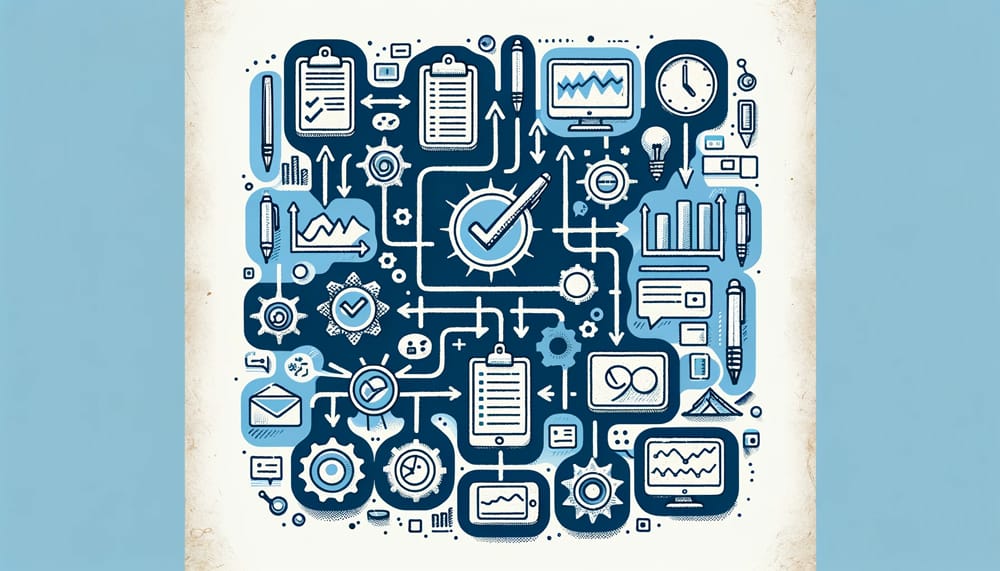
14.1. Innovations in ESM Methodology
The field of ESM is continually evolving, with new technological advancements and methodological innovations shaping its future.
The integration of wearable technology and IoT (Internet of Things) devices in ESM research represents a significant advancement. These technologies enable passive data collection, reducing participant burden and enhancing the quality and quantity of data. Wearables can track physiological responses, activity levels, and environmental factors, offering a more comprehensive understanding of participants’ experiences.
“As ESM strides into the future, it’s poised on the cusp of a revolution, where wearable tech and artificial intelligence converge to paint a fuller, more nuanced portrait of the human experience, transforming every heartbeat and step into a data point on the vast canvas of life.”
Future ESM methodologies are likely to leverage advancements in artificial intelligence and machine learning. These technologies could offer more personalized and adaptive assessment schedules, analyze large datasets more effectively, and provide real-time feedback to participants or researchers. Such developments could revolutionize the way ESM studies are conducted and interpreted.
14.2. Integrating ESM with Other Research Approaches
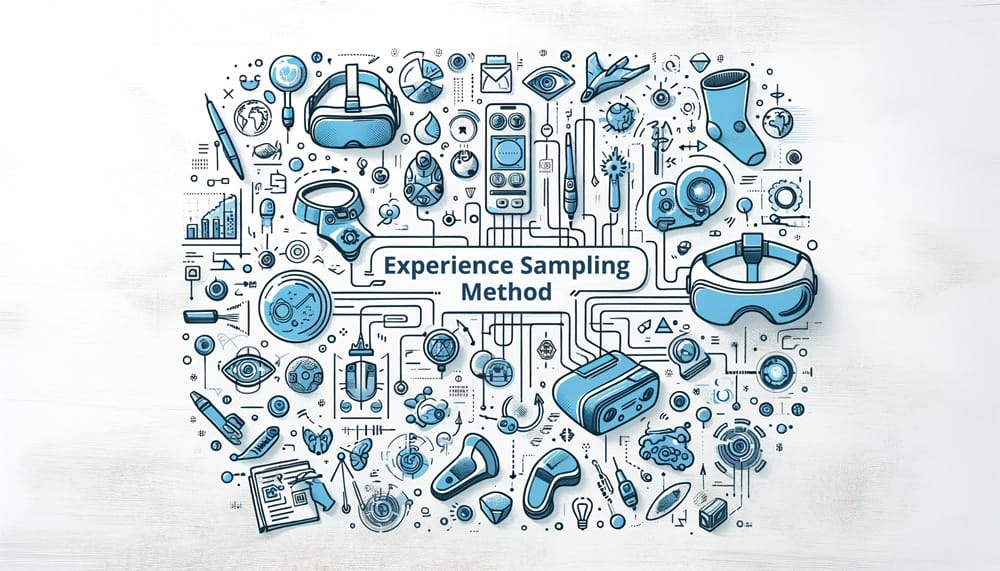
The versatility of ESM makes it an ideal tool for cross-disciplinary research. Its application extends beyond psychology and healthcare to fields like environmental studies, marketing, and urban planning. By integrating ESM with different research methods, such as qualitative interviews or large-scale surveys, researchers can gain a more nuanced understanding of human behavior and experiences. Explore the effective integration of the Experience Sampling Method (ESM) with other research methodologies in our comprehensive guide, Combining Experience Sampling Method (ESM) with Other Research Methods: A How-To Guide. This guide provides practical advice and strategies for researchers looking to enhance their studies by combining ESM with qualitative and quantitative approaches.
“ESM stands at the crossroads of innovation, bridging diverse disciplines with its dynamic capabilities. By melding the real-time insights of ESM with the depth of traditional research methods, it promises a kaleidoscope of perspectives, enriching our understanding of the human narrative in unprecedented ways.”
The combination of ESM with other research methods, like longitudinal studies or experimental designs, can enhance the depth and breadth of research findings. For example, ESM can provide real-time data that complements the insights gained from retrospective surveys or controlled experiments.
The impact of ESM on future research is substantial. It not only provides a tool for more accurate and ecological data collection but also opens up new possibilities for understanding complex human behaviors and experiences. Its application in various fields could lead to groundbreaking insights and innovations.
14.3. Broadening the Scope of ESM

ESM is poised to influence a wide range of fields by providing real-time, context-rich data. In healthcare, it can lead to more personalized treatment plans. In psychology, it can offer deeper insights into daily emotional and cognitive processes. In urban planning and environmental studies, ESM can inform policies by understanding individuals’ interactions with their surroundings.
Tips for Future Directions
- Explore integration with wearable technology for passive data collection.
- Utilize AI and machine learning for data analysis and adaptive assessments.
- Apply ESM in cross-disciplinary research for comprehensive insights.
- Combine ESM with other research methods for richer data interpretation.
- Anticipate the impact of ESM across diverse fields and applications.
“ESM’s future shines with potential, bridging technology and human insights to innovate across fields, from healthcare to urban planning, transforming data into actionable wisdom.”
The future of ESM is marked by exciting possibilities and innovations. As technology advances, so does the potential for ESM to provide deeper, more accurate insights into human behavior and experience, paving the way for significant advancements in research and practical applications across various fields.
15. Conclusion and Key Takeaways

ESM stands as a pivotal methodology in contemporary research, offering unparalleled insights into the real-time experiences and behaviors of individuals. Its strength lies in capturing data in the natural environment of participants, thus providing a more accurate and ecologically valid understanding of human behavior. ESM bridges the gap between controlled laboratory settings and the dynamic, often unpredictable nature of everyday life.
ESM offers several key benefits, including increased ecological validity, real-time data collection, and the ability to track changes over time. These advantages make it particularly useful in fields such as psychology, healthcare, and social sciences. ESM has been instrumental in understanding phenomena like mood disorders, patient experiences in healthcare, and consumer behavior in real-world settings.
“ESM emerges as a cornerstone of modern research, melding the immediacy of real-life context with the precision of scientific inquiry, offering a lens into the ever-changing human experience.”

As the field of ESM continues to evolve, researchers are encouraged to embrace its potential while being mindful of its limitations. Balancing methodological rigor with participant burden, ensuring privacy and ethical considerations, and leveraging technological advancements will be crucial. Researchers should also consider the interdisciplinary potential of ESM, combining it with other methodologies to enrich their findings.
The future of ESM is likely to be characterized by technological advancements, increased integration with other research methods, and broader application across various fields. The use of AI, machine learning, and wearable technology will enhance the efficiency and depth of ESM studies, making it an even more powerful tool in understanding the complexities of human behavior.
15.1. Advice for Researchers

For researchers embarking on ESM studies, it is essential to carefully design the study to minimize participant burden while maximizing data quality. Being transparent with participants about data use and ensuring privacy will be crucial. Researchers should stay informed about the latest developments in ESM methodology and technology to enhance their research. Discover the future prospects of Experience Sampling Method (ESM) research in our enlightening guide, Future Directions in Experience Sampling Method (ESM): Emerging Trends and Technologies. This article explores upcoming trends and technological advancements that are shaping the future of ESM research, providing valuable insights for researchers and practitioners in the field. Additionally, for more in-depth exploration of qualitative techniques in ESM, resources such as Integrating ESM with Qualitative Research can be highly informative. Finally, for more detailed strategies on handling these challenges, researchers can refer to resources such as Challenges and Solutions in ESM Research.
he essence of ESM, underscoring its significance, benefits, and the exciting prospects it holds for future research endeavors. As ESM continues to evolve, it promises to offer deeper insights and more nuanced understandings of human behavior across a variety of contexts.
You Might Also Be Interested:
- 📚 Delve into our comprehensive ESM Article Collection for insightful perspectives on Experience Sampling Method (ESM).
- 🌟 See our article Best Tools for Experience Sampling Method in 2024 to discover the top tools in the field.
- 🔍 Learn how the advanced features of Fibion Insight can aid your ESM research.
- 📅 Planning an ESM study? For a chat with our ESM expert, book a session with Dr. Miriam Cabrita.
Frequently asked questions in this topic
What is the Experience Sampling Method (ESM)? +
ESM is a research technique where individuals report their immediate thoughts, feelings, and behaviors at random intervals, capturing the dynamic nature of human experiences in real-time.
How does ESM differ from traditional research methods? +
ESM differs from traditional methods by capturing immediate and contextual data, reducing biases of retrospective reporting and providing a more holistic understanding of human experiences over time.
What are the different variants of ESM? +
ESM includes event-contingent, signal-contingent, and interval-contingent recordings, each tailored to specific research needs such as capturing event-driven data, random sampling of experiences, or data at fixed intervals.
What technological advances have impacted ESM? +
Advancements in mobile and wearable technology have revolutionized ESM by enabling real-time, in-situ data collection with greater accuracy and efficiency, and the integration of sensors for passive data collection.
What are the challenges and limitations of ESM? +
Challenges include ensuring accuracy and completeness of data, balancing detailed data collection with participant burden, and maintaining representativeness and reliability of data.
What are the future directions and emerging trends in ESM? +
Future trends include leveraging AI and machine learning for data analysis, integrating ESM with wearable technology for passive data collection, and expanding its application across various research fields.










